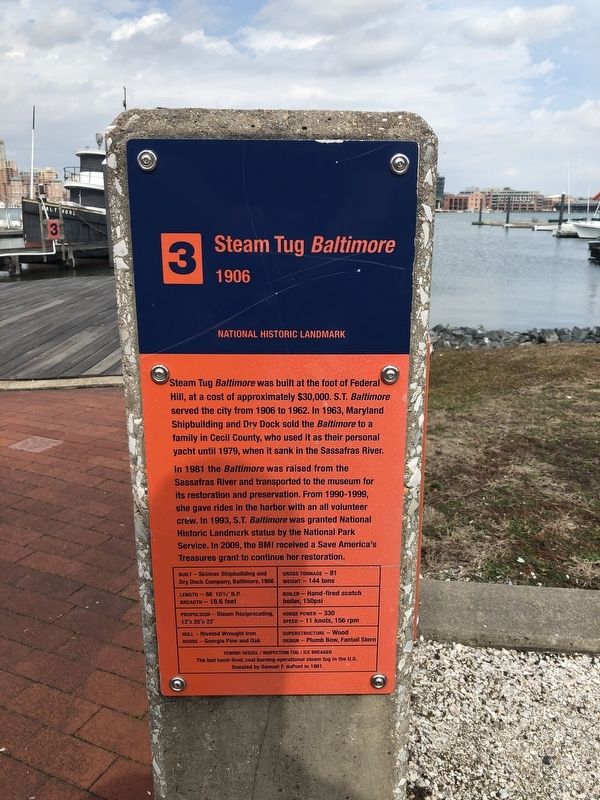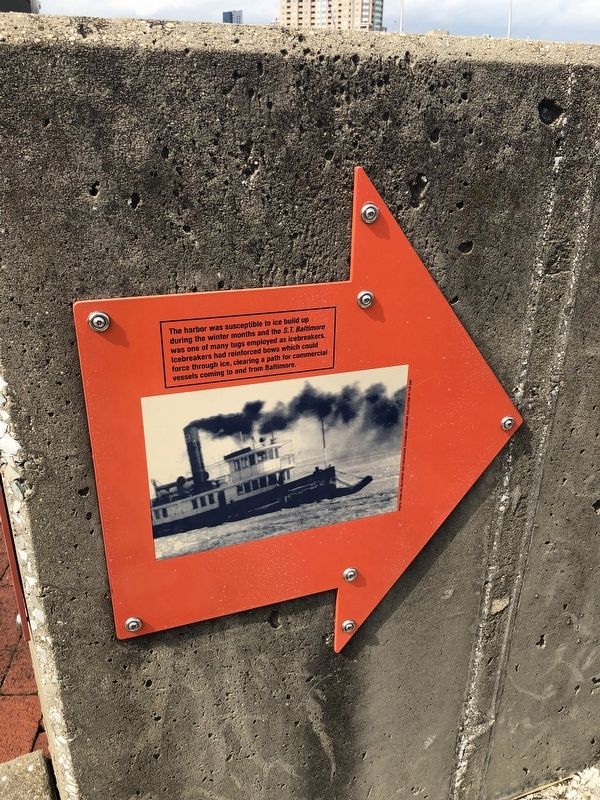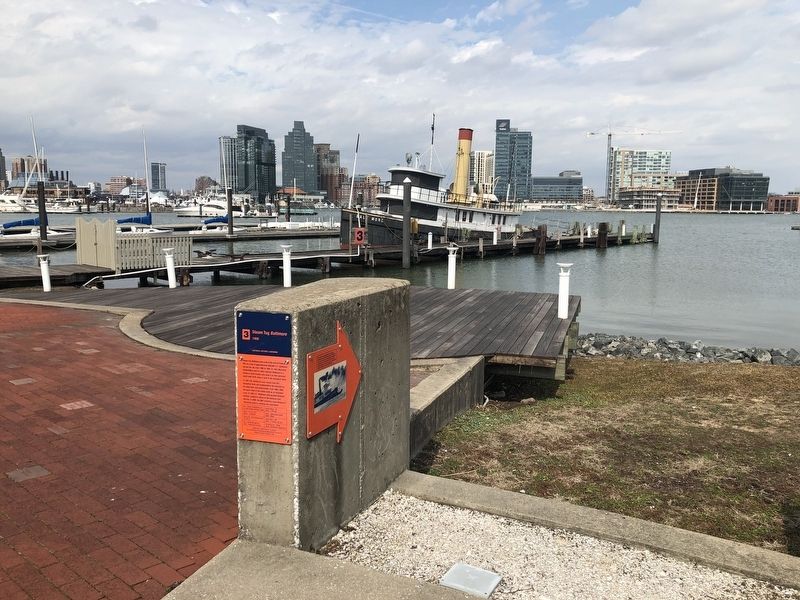Locust Point Industrial Area in Baltimore, Maryland — The American Northeast (Mid-Atlantic)
Steam Tug Baltimore
1906
— National Historic Landmark —
Steam Tug Baltimore was built at the foot of Federal Hill, at a cost of approximately $30,000. S.T. Baltimore served the city from 1906 to 1962. In 1963, Maryland Shipbuilding and Dry Dock sold the Baltimore to family in Cecil County, who used it as their personal yacht until 1979, when it sank in the Sassafras River.
In 1981 the Baltimore was raised from the Sassafras River and transported to the museum for its restoration and preservation. From 1990-1999, she gave rides in the harbor with an all volunteer crew. In 1993, S.T. Baltimore was granted National Historic Landmark status by the National Park Service. In 2009, the BMI received a Save America's Treasures grant to continue her restoration.
Built — Skinner Shipbuilding and Dry Dock Company, Baltimore, 1906
Gross Tonnage — 81
Weight — 144 tons
Length — 88' 10½" B.P.
Breadth — 18.6 feet
Boiler — Hand-fired scotch boiler, 150psi
Propulsion — Steam Reciprocating, 12" x 25" x 22"
Horse Power — 330
Speed — 11 knots, 156 rpm
Hull — Riveted Wrought Iron
House — Georgia Pine and Oak
Superstructure — Wood
Design — Plumb Bow, Fantail Stern
The last hand-fired, coal burning operational steam tug in the U.S.
Donated by Samuel F. duPont in 1981.
[Side of marker:]
The harbor was susceptible to ice build up during the winter months and the S.T. Baltimore was one of the many tugs employed as icebreakers. Icebreakers had reinforced bows which could force through ice, clearing a path for commercial vessels coming to and from Baltimore.
Erected by The Baltimore Museum of Industry. (Marker Number 3.)
Topics and series. This historical marker is listed in these topic lists: Industry & Commerce • Waterways & Vessels. In addition, it is included in the National Historic Landmarks series list. A significant historical year for this entry is 1906.
Location. 39° 16.449′ N, 76° 36.057′ W. Marker is in Baltimore, Maryland. It is in the Locust Point Industrial Area. Marker can be reached from Key Highway east of Boyle Street, on the right when traveling west. Touch for map. Marker is at or near this postal address: 1415 Key Highway, Baltimore MD 21230, United States of America. Touch for directions.
Other nearby markers. At least 8 other markers are within walking distance of this
Additional keywords. Steam Tug Baltimore
Credits. This page was last revised on February 20, 2021. It was originally submitted on March 16, 2019, by Devry Becker Jones of Washington, District of Columbia. This page has been viewed 247 times since then and 9 times this year. Photos: 1, 2, 3. submitted on March 16, 2019, by Devry Becker Jones of Washington, District of Columbia.


